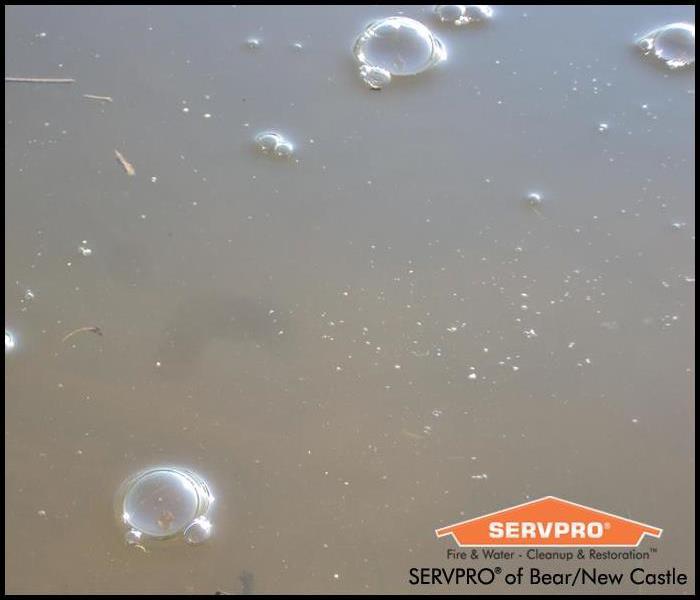What Commercial Property Owners Should Know About Flooding and Black Water
10/15/2019 (Permalink)
 SERVPRO of Bear / New Castle can respond immediately to your commercial water damage emergency regardless of the size or scope of the damage.
SERVPRO of Bear / New Castle can respond immediately to your commercial water damage emergency regardless of the size or scope of the damage.
Not all water damage is created equal, and the remediation steps you take depend on the original source of the water that flooded your building. “Clean water” is water that doesn’t pose immediate health threats and that comes from broken water lines, toilet holding tanks and faucets. If not treated in time, clean water can become gray water, which is water that does contain some contaminants. Gray water can include discharge from showers, sinks, aquariums, waterbeds and dishwashers. Then there is black water, or floodwater.
What Is Floodwater / Blackwater?
The water that enters a building during a flood usually contains harmful contaminants. Floodwater usually contains soil, which can contain feces, pesticides, and other contaminants, natural or not. It can also contain sewage runoff, which may be contaminated by bacteria, molds, fungi, protozoans, and viruses. Floodwater is categorized as black water.
What You Can Do To Prepare
Flood water can be absolutely devastating to your commercial property, not to mention it can cause your business to be temporarily displaced, and business put on hold. You can’t predict a flood but you can plan for one.
Know Your Flood Risk
It’s important to keep track of your region’s flood risk. There are a number of factors that can determine your flood risk, but keep in mind that nowhere in the United States is risk-free. If you live in a coastal city during hurricane season, your flood risk will dramatically increase. Other areas with typically high flood risk include low-lying areas near bodies of water or downstream from a dam or levee.
Know Your Insurance Options
When it comes to natural disaster-type flash floods, typical commercial insurance policies often don’t cover the damage. Flood insurance is a separate policy purchased through FEMA, so keep that in mind if you’re in an area with high flood risk. Also, familiarize yourself with local disaster restoration companies and choose one you prefer beforehand since the time to act must be immediately after the flood.
Know the Signs of Water Damage
Some floods are more severe than others, and in some cases, it will be obvious when your business has been affected. In other cases, however, water damage can be more insidious. It’s important to recognize the signs and know the difference types of water that can damage your property. Black water, for example, is highly contaminated and will cause severe odor and mold damage to your property if not treated immediately. Floodwater is, in every case, considered black water. Grey water can also cause damage, but it is derived from appliances and pipes in your building.
Develop a SERVPRO Emergency READY Profile For Your Business
By developing a SERVPRO Emergency READY Profile for your business, you minimize business interruption by having an immediate plan of action. Knowing what to do and what to expect in advance is the key to timely mitigation and can help minimize how water and fire damage can affect your business.
To learn more about our SERVPRO Emergency READY Profile? Call SERVPRO of Bear/New Castle at (302) 392-6000
Why Choose SERVPRO of Bear / New Castle?
SERVPRO of Bear/New Castle has the training, experience, and equipment to handle large commercial storm or water damage emergencies. Regardless of your property type or size, we will respond quickly to clean the property and manage the restoration project through to its completion.





 24/7 Emergency Service
24/7 Emergency Service